If you want to see more of Cuba than just the iconic bars in Havana and the endless beaches of Varadero, this is the perfect guide for you – taking you from coast to coast. On the whole, it takes you from the island’s westernmost tip all the way to the Guantanamo region in the very east.

I travelled across Cuba all by myself and on public transportation. Hence, let me tell you, exploring a socialist country like Cuba does differ quite a lot from travelling through other regions.
Therefore, not only will my stories be interesting. Especially Cuba-novices will certainly appreciate my thoroughly researched information and suggestions.
History in a Nutshell
Bondage
On the island that later became Cuba lived indigenous Arawak until Christopher Columbus and his troops got there on his first voyage in 1492. From the 16th century, the Spanish ruled the island, and consequently, within a few decades, they practically exterminated the indigenous population with their violence and diseases. To carry out the very labor-intensive sugar cane and tobacco cultivation, the Spanish planters, obviously, imported tens of thousands of African slaves in the 17th and 18th centuries.
A struggle for independence began in 1868 and continued intermittently. Cuba’s national hero José Martí had fought with a very small army against more than 200,000 Spaniards since 1895. In 1898, the Spanish finally withdrew by signing the Treaty of Paris. This ended the Spanish-American war – over territories that shouldn’t be under either party’s rule in the first place. Nevertheless, it recognized continuing US military occupation.

So although Cuba became an independent country, it was not sovereign. The Platt Amendment granted the USA the right to intervene at any time the interests of the US seemed impaired. They kept this status until 1934. Infamous Bahía de Guantánamo is still part of this anachronism.
Am I actually the only one who finds that bizarre?
This is Not America
In 1952, military and politician Fulgencio Batista overthrew President Carlos Prío in a bloodless military coup. Subsequently, he suspended important legal guarantees of the 1940 constitution. Also, he canceled the elections originally planned for June 1952. Then, he dissolved the Senate and House of Representatives Congress and became president. Most importantly, he was a keen puppet of the US government.
His governing led more and more to discontent and unrest among the population, particularly in the cities.
Revolution
Hence, in 1959, Cuban revolutionaries brought down the dictator. They were guided by Fidel and Raúl Castro, Camilo Cienfuegos, and Argentina-born Ernesto Guevara, aka Che,
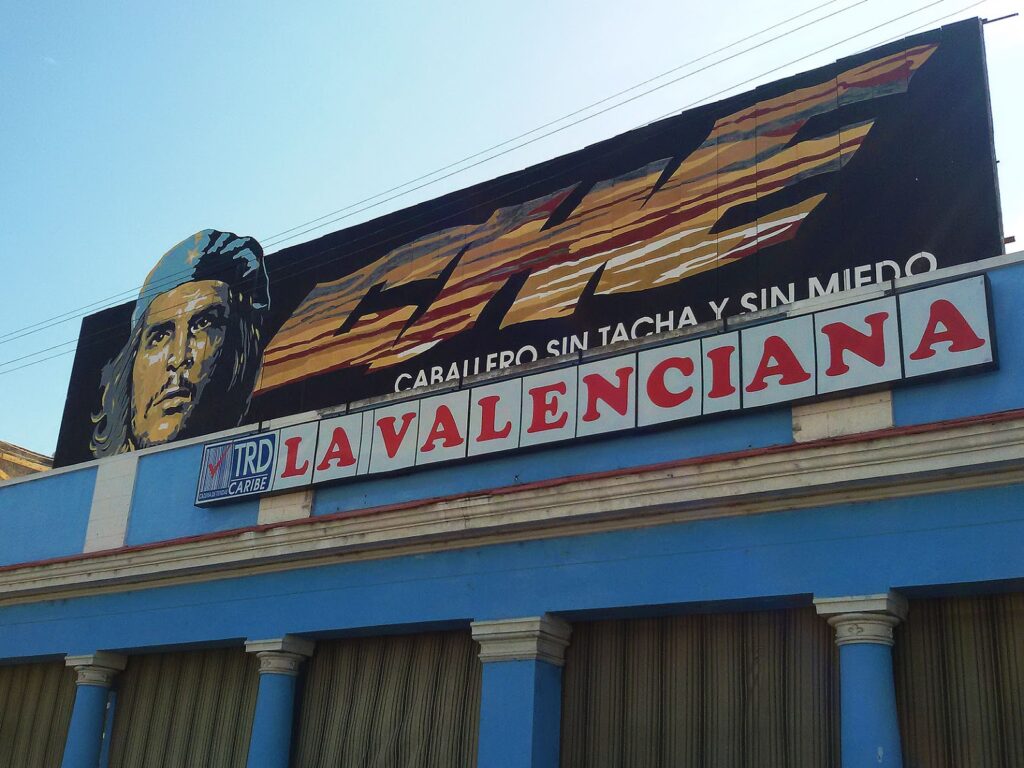
Hence, Cuba’s political path has long been unclear and also controversial among the revolutionary leaders. Shortly after taking power, Fidel Castro began to gradually distance himself from the political ideals of the revolution.
So, yes, the idea of justice and equality, of health care and education for everybody, was a good and noble one. Unfortunately, this revolution, too, was not only fair and square. Particularly the revolution’s pin-up Che was in charge of the re-education and the vision of the new man.
However, it was not the violation of human rights that lead to the still-lasting US embargo. Sadly, that’s rarely the true reason.
It was the confiscation of companies and real estate owned by US citizens and wealthy Cubans.
Practical Information
How to Get There
José Martí International Airport, located 17 kilometers south of Havana, is Cuba’s main international and domestic gateway. There are flights to other Caribbean islands, to Central and South America, to Canada, Europe, Africa, and Asia.
Especially during high season, international flights are also going straight to Varadero, Cuba’s famous beach resort.
In 2016, during the Cuban Thaw, regularly scheduled commercial service between Cuba and the USA began. In late 2017, Donald Trump reimposed stricter travel regulations. The Cuban Thaw partially ended.
Visa and Travel Cards
There is a handful of countries that don’t require any form of visa for Cuba. Then, there are some countries that require a real visa. Travellers from most countries require a Tarjeta del Turista, a tourist card. You’ll get it online or at a Cuban Embassy or from your travel agent.
Travel Health Insurance
Apart from your travel documents, you should have travel health insurance that covers medical evacuation by air, medical emergencies, and repatriation. If you don’t bring proof of this insurance, you have to buy it on arrival. However, they charge about 3 US$ per person per day.
I highly recommend you check my World’s Most Complete Travel Information for further requirements and formalities.
If you’re not on an organized trip, you’ll need to go downtown Havana by cab. A ride from the airport takes approximately half an hour and costs the equivalent of $20-25 US$.
If you speak really good Spanish and after your long flight still have the nerve to huggle, you can go to the domestic terminal. Often, you can negotiate a better, more ‘Cuban’ price there.
How to Get Around
Travelling in Cuba happens in many more or less adventurous and precarious ways.
Inner-City Transport
Basically, all public means of transportation are jam-full. Therefore, most visitors rather rely on cabs and coco taxis in big cities. They have them to themselves. However, these vehicles are far more expensive than local buses or colectivos, and in addition according to my experience, it’s mostly drivers who will dupe you.
You can avoid this at least a little bit if you ask locals how much your trip should normally be and then negotiate with the driver beforehand. However, don’t feel deceived if some locals obviously do not want to support you. Don’t forget that in a precarious system like the Cuban society, people need to stick up for each other. Solidarity is crucial, I scratch your back, you scratch mine. And they don’t necessarily include foreigners in this system. And to be honest, why should they? Just think for a moment about the fantastic economic difference – and fantastic not in a good way.
Inter-City Transport
You are less prone to be duped on long-distance trips. Here, too, Cubans travel by basically every container with wheels. Old buses, lorries, collectives, you name it. Obviously, you can try that, too. But firstly, it can be really time-consuming – and I’m talking hours. And then I also find it a bit unfair towards the locals who depend on this slow, uncomfortable, and most of all very cheap of travelling. Mind you, you are taking their seat. You can afford another service, they can’t.
Viazul
For people like you and me, there is Viazul. Viazul has a fleet of buses manufactured in China so the seats are really small and space between rows is minimal. Nevertheless, they are the most reliable terrestrial way of travelling all over Cuba since it caters to basically all towns and cities. I did all my travelling by Viazul, and besides the limited personal space on the bus, it was totally fine.
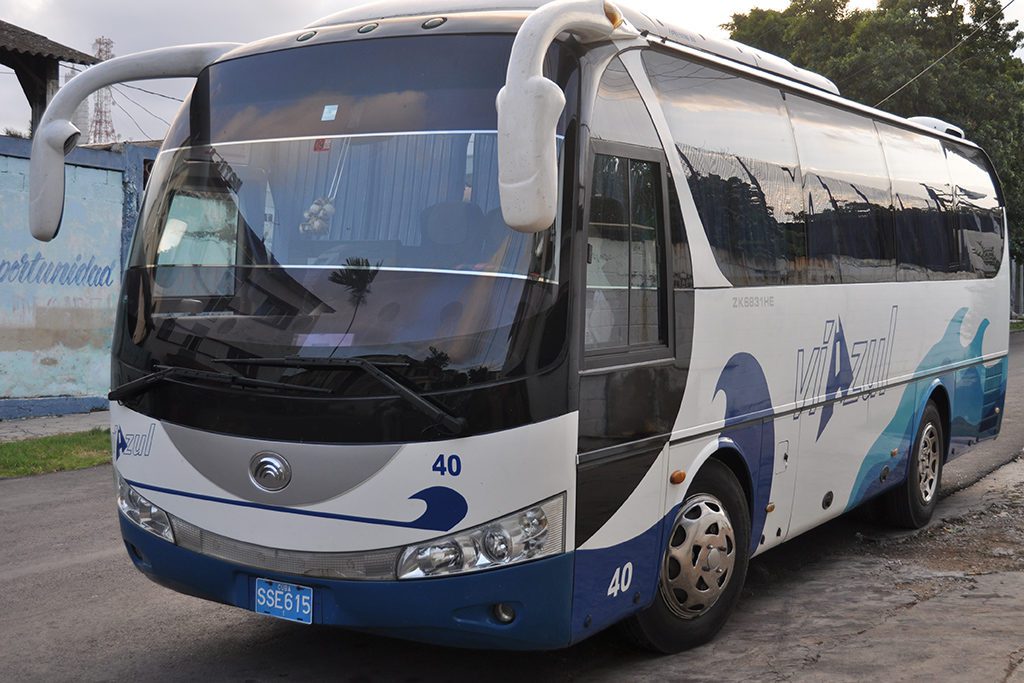
(Photo: Escla, Viazul bus, cropped 2:3, CC BY-SA 3.0 )
The fare includes only 20 kilograms of luggage. This will be weighed and you’ll be charged.
Since Viazul is not only very popular with tourists, the capacities tend to be far behind the demand. Hence, long-term planning is highly recommended. You should put together your itinerary and route about two to three months before your trip and purchase all your tickets on their website.
To give you an idea, the trip from Havana to Vinales is 12 CUC, to Trinidad 25 CUC, and to Santiago de Cuba 51 CUC. The latter trip, however, takes about 17 hours.
This brings us to…
Domestic Air Travel
There are currently flights between Havana and Nueva Gerona, Holguin, Santiago de Cuba, and Baracoa.
Here, too, I recommend buying tickets as early as possible. In any case, at least six weeks in advance and possibly on the website www.cubana.cu.

Booking tickets in Cuba at short notice is difficult and usually not possible. You can try to book a flight in Havana or Santiago de Cuba at one of the larger Cubana offices.
A more convenient option to obtain a ticket is a local travel agency in Cuba, for example, Havanatur with branches in many larger hotels.
Still, booking tickets online way in advance is your best bet.
Please keep in mind that Cubana tends to have massive delays. Don’t even think about same-day connections to your international flights. Always allow at least 24 hours, or better still two days.
Travelling by Train
Cuba is probably the only Caribbean island where you can still experience the railway adventure! Of course, the state railway company does not have a very good reputation. This is especially in terms of punctuality but also regarding the trains’ cleanliness and functionality.
However, on the main route from Havana to Santiago de Cuba, the train is usually not that much slower than the bus. Still, it takes almost an entire day. Albeit, since the summer of 2019, the most important long-distance routes are served by new Chinese rail cars.
Anyway, keep in mind that on long-distance trains, only a few seats are available for foreigners. Ticket sales start 15 days ahead. Consequently, it is rather difficult for tourists to get a seat. But you can still try.
In Havana, tickets are sold at the Coubre train station which is near the main train station. Especially if you need more than one or two tickets, you should buy your seats as long in advance as even possible.
Where to Stay
Normally, hotels in Cuba are run by the government. Consequently, the employees are not so very service-oriented. Therefore, the best way to rest your head is to book yourself into a Casa Particular.
A Casa Particular is someone’s private home licensed to rent rooms to tourists. Since the government has a firm grip on these private businesses, all the rooms are nice and meet international standards. The owners have to pay a certain amount to the government whether they rent the room or not. Therefore they are keen not to leave rooms empty. Hence, the service is really good. It’s also advisable to eat not only breakfast but also another meal at the casa. Believe me, the food is always better than what you get at a – again: government-run – restaurant.
The only exception might be if you eat at a Paladar – we get to that later.
Where to Eat
I mentioned it above: Eating in a privately run house is practically always much better than at a restaurant.
A legal, privately run diner is called Paladar. It can vary from a single table in a back room of a private home to a large, fancy, and pricey restaurant.
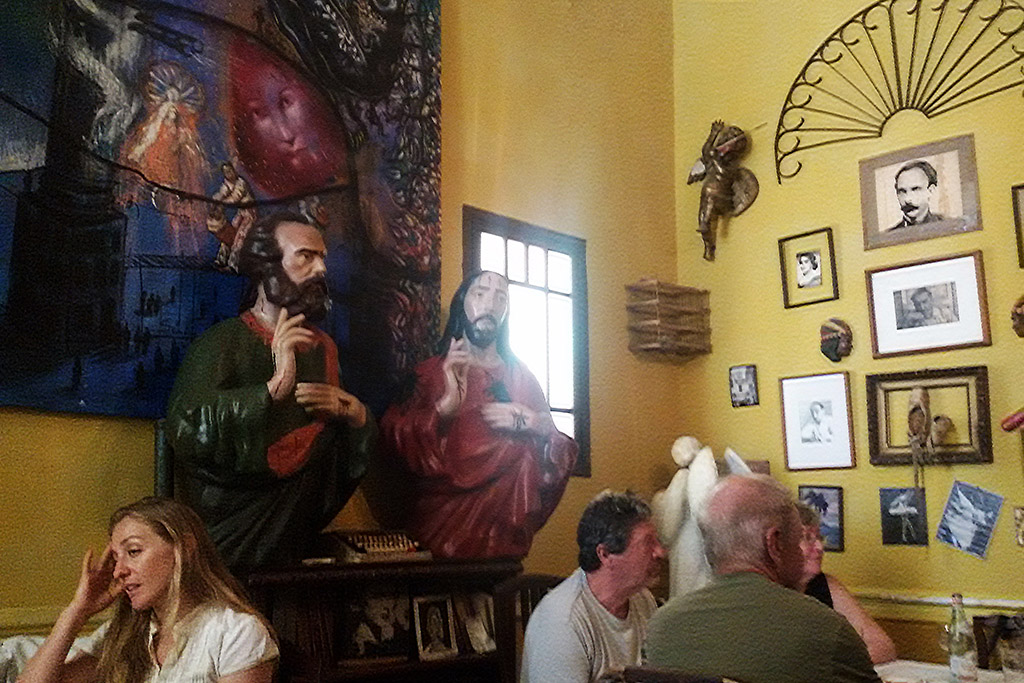
Not only the food is much better at Paladares, but also the service. Since the owners have an interest to get and keep customers, they are friendly and attentive while waiters at the regular restaurant rather slack.
Cash and Cards
Until the end of 2020, there were two official currencies: The CUP – Peso Cubano – and the CUC – Peso Convertible. The socialist island state has had this confusing dual currency system since 1994.
However, since the beginning of 2021, only the Peso Cubano keeps circulating. The exchange rate is 24 CUB to one US$. This unification of the currencies is expected to grant Cuba’s citizens equal opportunities and social justice.
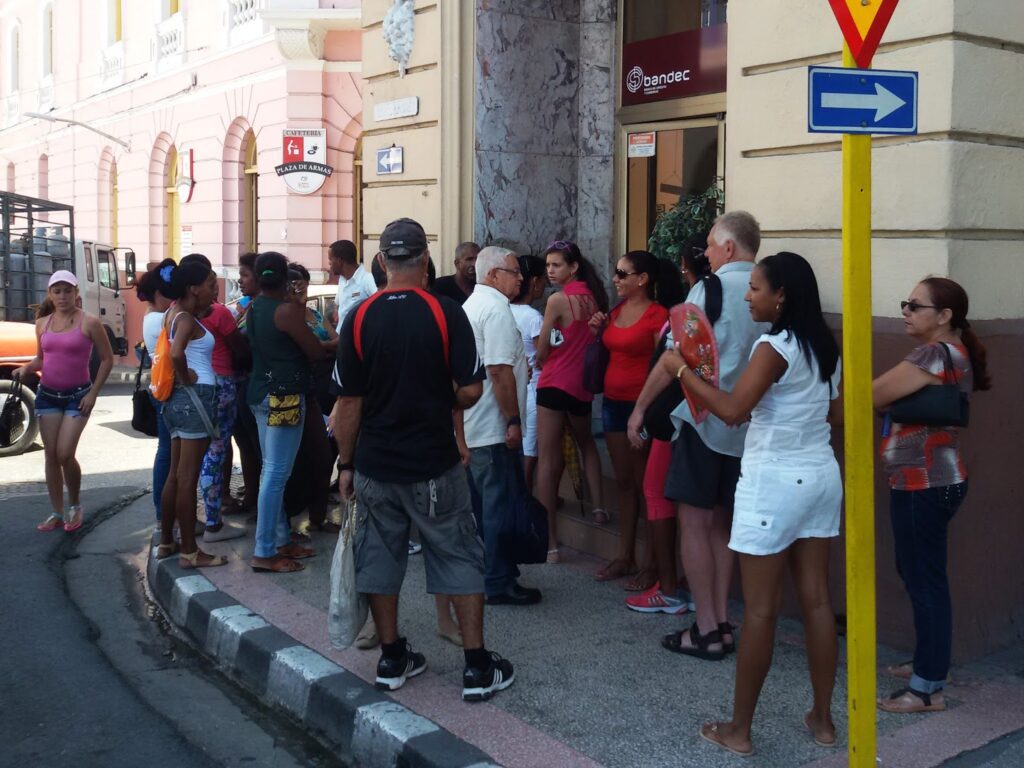
Already in July 2020, Cuba had abolished the ten percent tax on US$ purchases that had been in force since 2004. Since then, in some shops, certain products can also be paid for by card in US currency.
Since this novelty is still in progress, obviously, some prices in my posts on Cuba still quote the Peso Convertible CUC – as do many Cuban websites. I hope that they’ll correct their sites asap so that I can adjust the information on my blog. However, if you don’t want to wait: One CUC equals one US$, so that shouldn’t be a big problem, after all.
It’s a Permanent Struggle
I need to point out that Cuba is, despite the difficult economic situation for the local people, rather costly. As a matter of fact, the tendency of locals to milk the cow called tourists as much as they can make matters even worse. The difference between what people earn in regular jobs and what they get from travellers is just insane. You pay for a room for one night the equivalent of a teacher’s monthly salary.
So try to bargain, and if you have the feeling of being screwed over, you’re probably right. I got mainly cheated by drivers, but I’ve heard all sorts of stories about shops and restaurants.
Although it’s hardly ever a big amount, for me it’s a matter of principle. I don’t like the feeling of being taken for a moron.
Language
Since Cuba was once conquered by the Spanish, to this date, Castellano is the official language.
Even if you have a great command of Spanish, in the first days, you might have trouble understanding everything since Cubans, obviously, have a peculiar accent.
If you want to learn some basic Spanish or just brush up on your knowledge, there are various apps and online tools. I personally like to practice with babbel.
Communication and Connection
Writing about phone and internet connections in Cuba is a real challenge. Because while I’m typing, things can be changing.
So here’s the status quo of the spring of 2021.
Hotspot
Since 2014, Cuba’s network capacities have multiplied. Before that, Cuba only had satellite connections.
The widespread expansion of Internet access began in the same year with the establishment of public WiFi hotspots in parks and squares. Today, there are about 1,000 across the country.
Prices were gradually reduced from 4.50 CUC to 1 CUC per hour. There are also several hundred public Internet cafés in the branches of the governmental communication company ETECSA.
First, you need a scratch card with access data. Theoretically, you can get it at all ETECSA branches and at street stalls. This being said, be aware that in touristy hotspots, queues at ETECSA can be insane. Also, scratch cards can be sold out.
It’s far better to try your luck in not-that-popular and busy places such as Cienfuegos, Santa Clara, and Camagüey.
Unofficial sales in the gray market on the street are still common and usually much faster. However, usually, they charge about 30% more.
The network is WIFI_ETECSA and you get access with any internet-compatible device.
Here is ETECSA’s complete list of hotspots.
Hotels
85 percent of Cuba’s hotels offer internet access for their guests. However, en-suite internet access is still not the standard.
In many hotels, you can now log into the Wifi. Since the cards for the hotel internet are usually the same as for the public hotspots, they often let you use their Wifi even if you’re not a guest. Of course, they charge you, and they charge you more than at the public hotspots. Still, it can be an advantage to use their net since often, it’s less frequented. Also, if you want to skype or facetime, the surroundings tend to be quieter than a public park or square.
Private Connection
Since the end of 2017, private DSL connections have also been installed in Cuba. About 80,000 households have been supplied.
Since the expansion of fiber optics is expensive and therefore progressing rather slowly, private DSL connections have been allowed to be shared with neighbors.
Therefore, when booking a room at a casa particular, ask your hosts if they have private internet access. Since these hosts are usually making much more money than Cubans who don’t work with tourists, they are also among the first customers.
Here, too, you access the internet through the same WiFi hotspots, and billing is based on time units and not on volume.
Mobile Internet
On December 6, 2018, the 3G-based mobile internet went into operation nationwide. More than 2.5 million Cubans use the offer, which means that the rush to the formerly heavily frequented WiFi hotspots has decreased significantly.
The good news for visitors is that instead of the expensive roaming fees you can simply buy a Cuban SIM card. It is available in every ETECSA branch. Obviously, you need to show your passport.
It costs 40 CUC and includes a 10 CUC credit. The card can be topped up with coupons and via online portals.
However, like everywhere else, more and more public places like restaurants and bars are now offering WiFi access.
How to Get Along
“Hola, buenos dias”, the young woman behind the counter doesn’t even as much as look at me as I enter the small ice cream parlor. “Hola?” Now she tiredly raises her eyes. “Buenos dias”, I belt joyfully. To be honest, my joy is sarcastic. Since one might think she’s just hearing impaired. Or depressed. Or coy. I thought that the first dozens of times as I got this reaction when entering and greeting. Whereby, it’s actually the opposite of a reaction. It’s pure and utter ignorance.
I know where it comes from. I understand. Still not a fan.
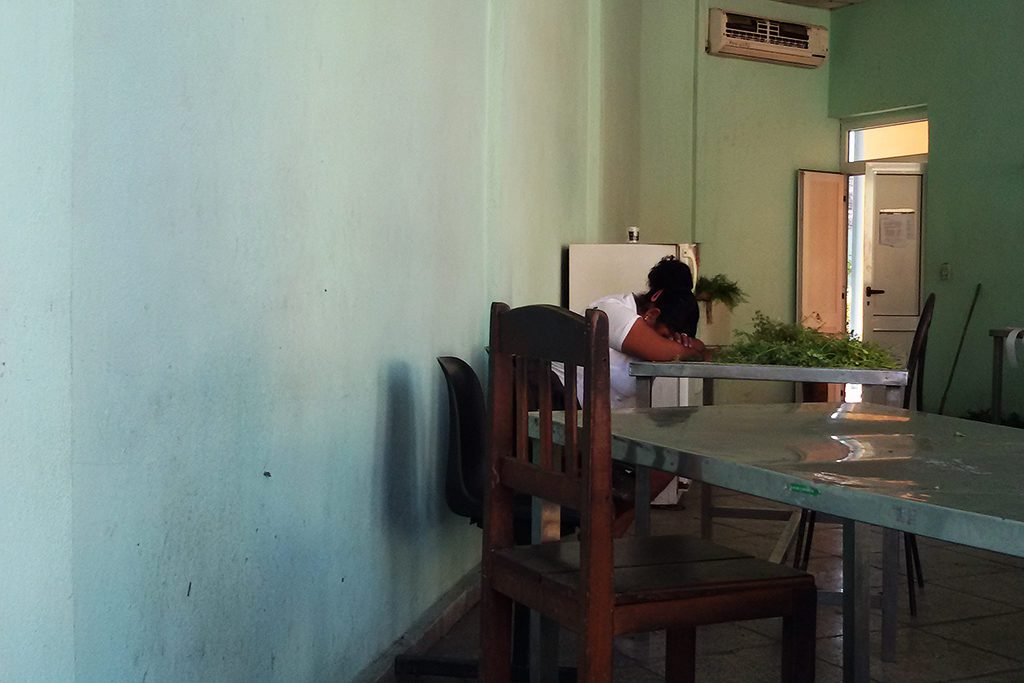
People in Cuba earn next to nothing. That must be difficult. They are standing in stores that have hardly anything to sell. That must be frustrating. They don’t get fired. That’s not very motivating. Therefore, people working for governmental institutions – and that includes hotels, restaurants, stores, bus terminals, and much more – are not very motivated to grant any sort of service.
They won’t get promoted if they work their but off.
They won’t get fired if they fall asleep.
So, why bother?
Also, they hate every intruder in their daily routine.
So, very often, they are not courteous let alone friendly.
Often, they are simply rude. Incredibly rude.
Although I do understand where this attitude is coming from, after a couple of days, it started to get on my nerves.
In my post Grub First, Then Ethics – Brace Yourself for Cuba I get into detail regarding other very Cuban peculiarities. You might want to check it out since it will certainly save you some frustration and soften your culture shock.
Map
The Route I Travelled
The Places I Have Visited
These pictures invite you to visit some amazing places
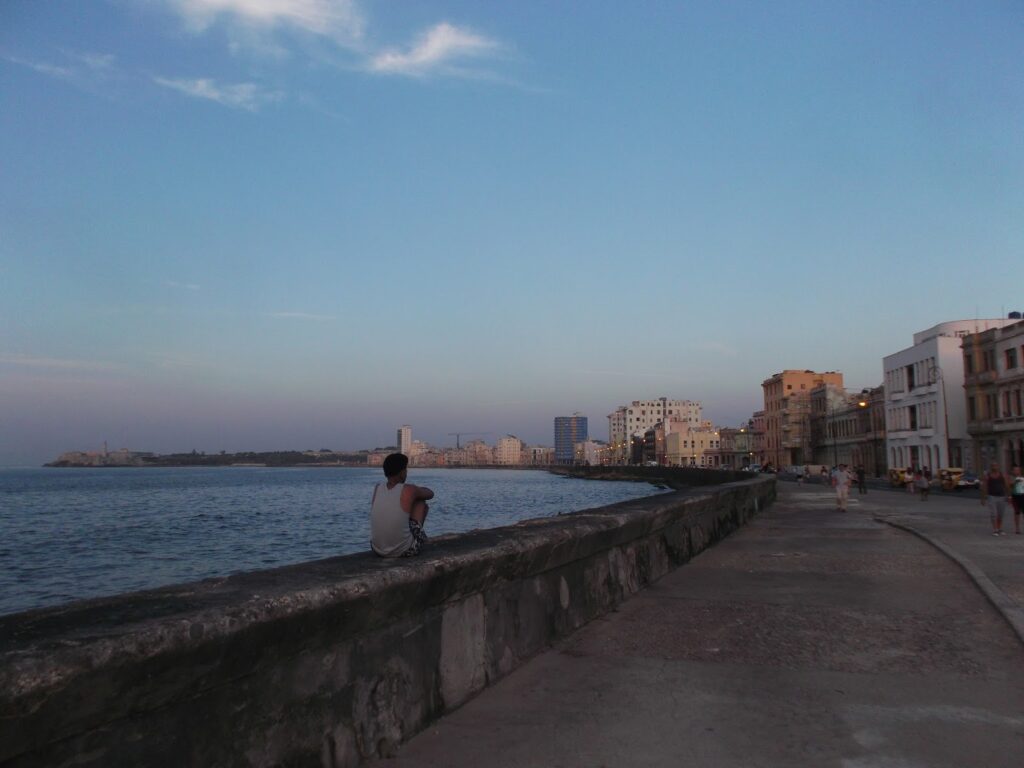
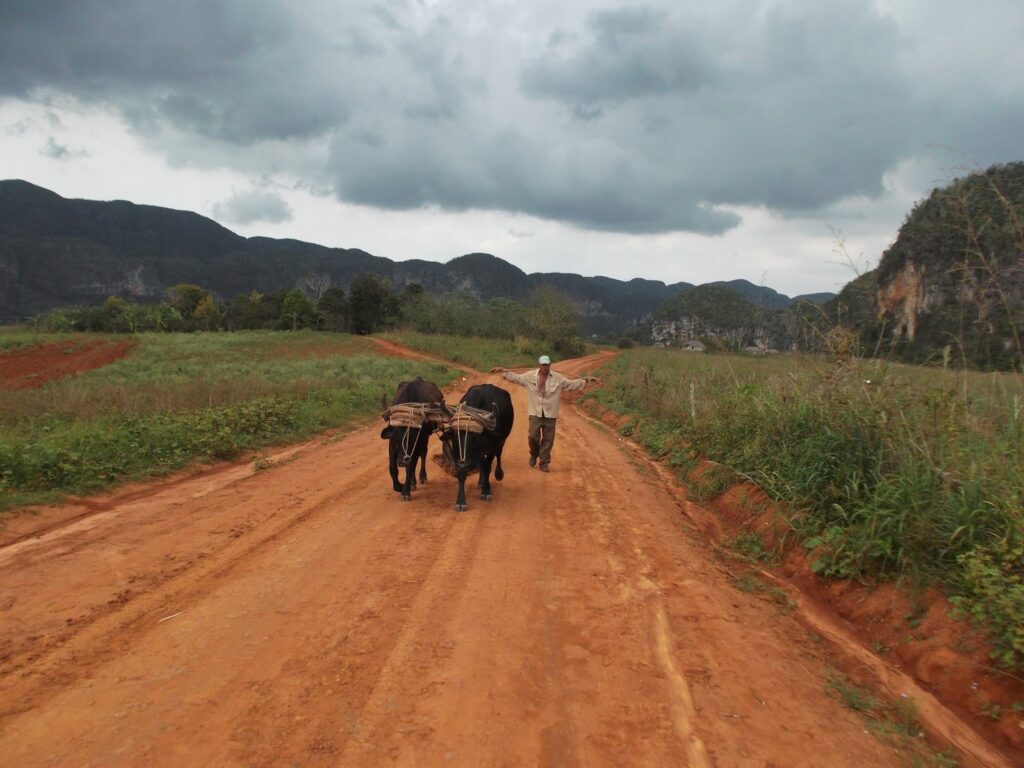

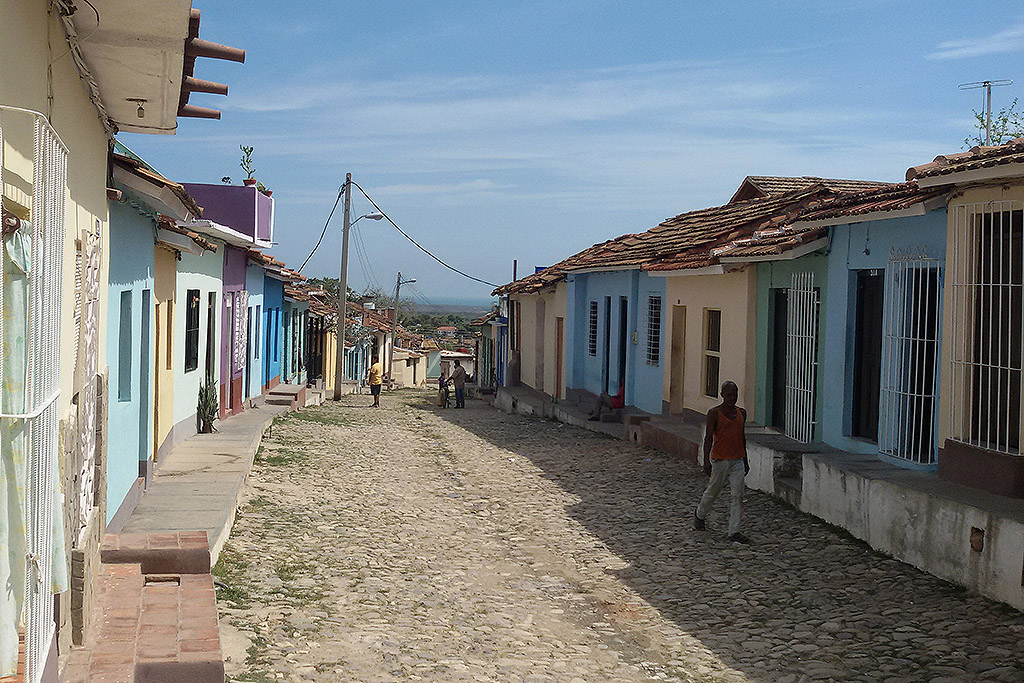

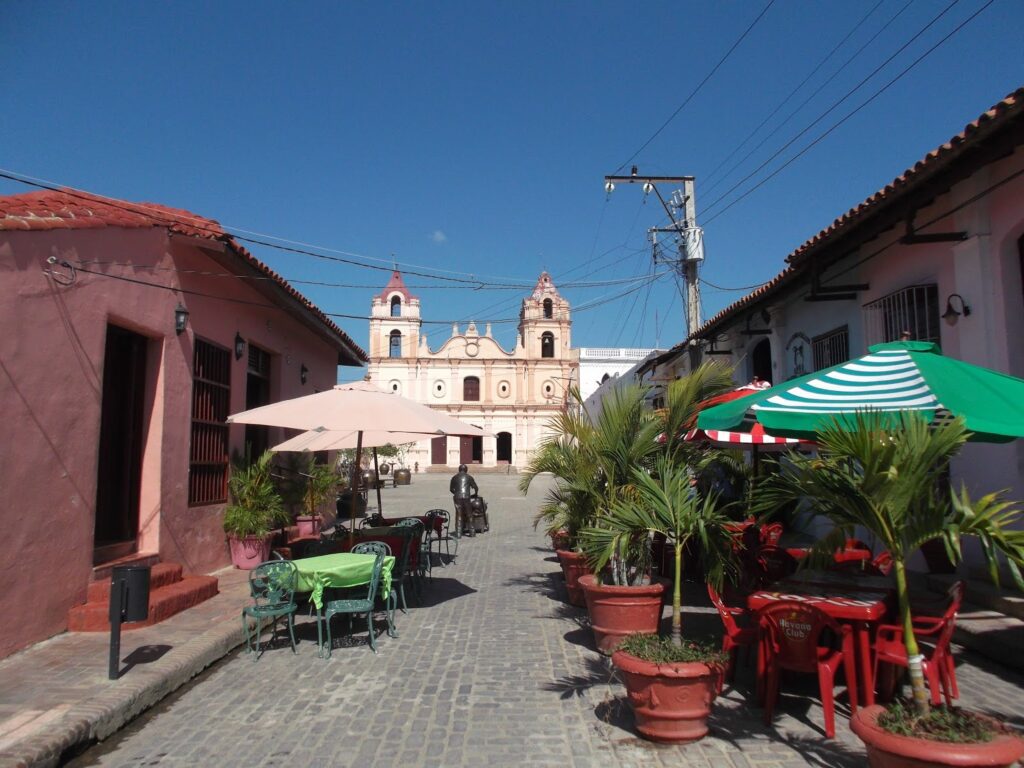

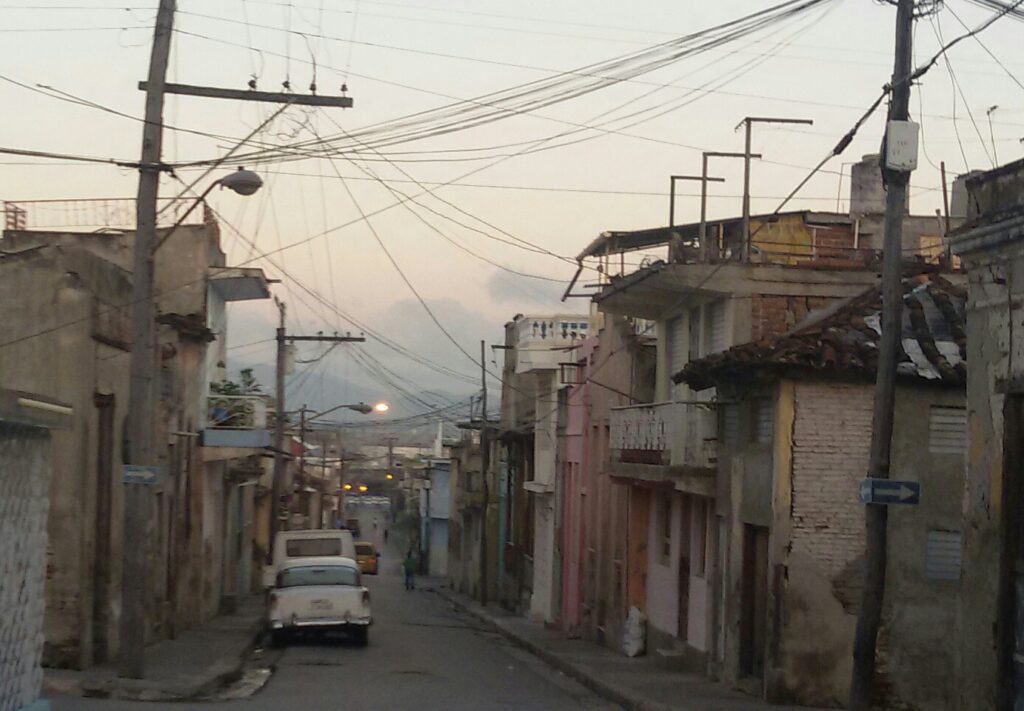

Pinnable Pictures
If you choose to pin this post for later, please use one of these pictures:
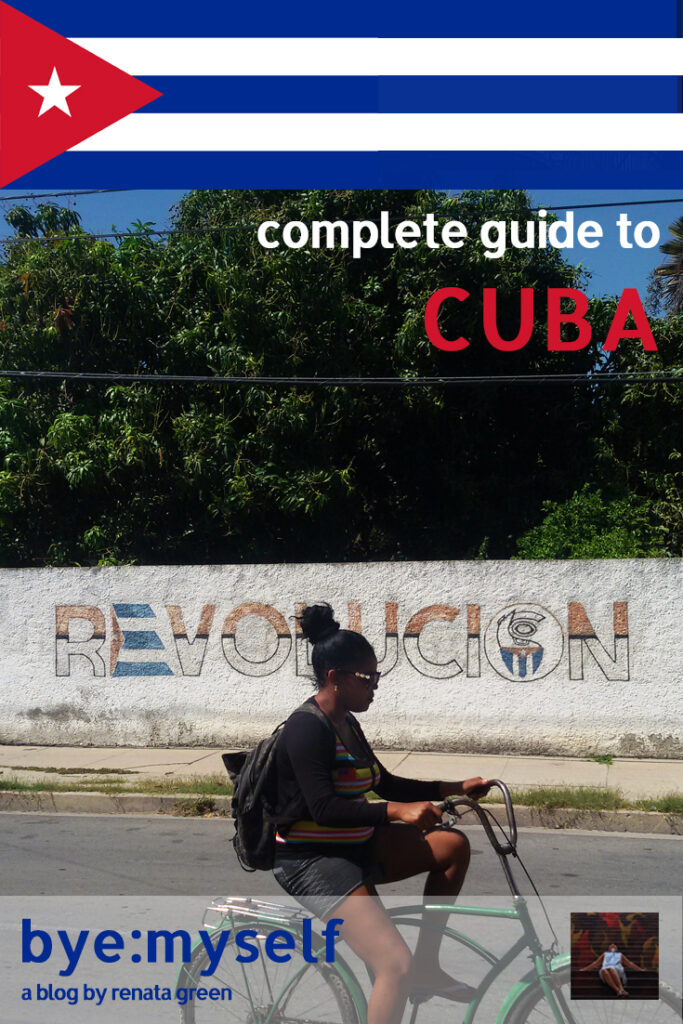
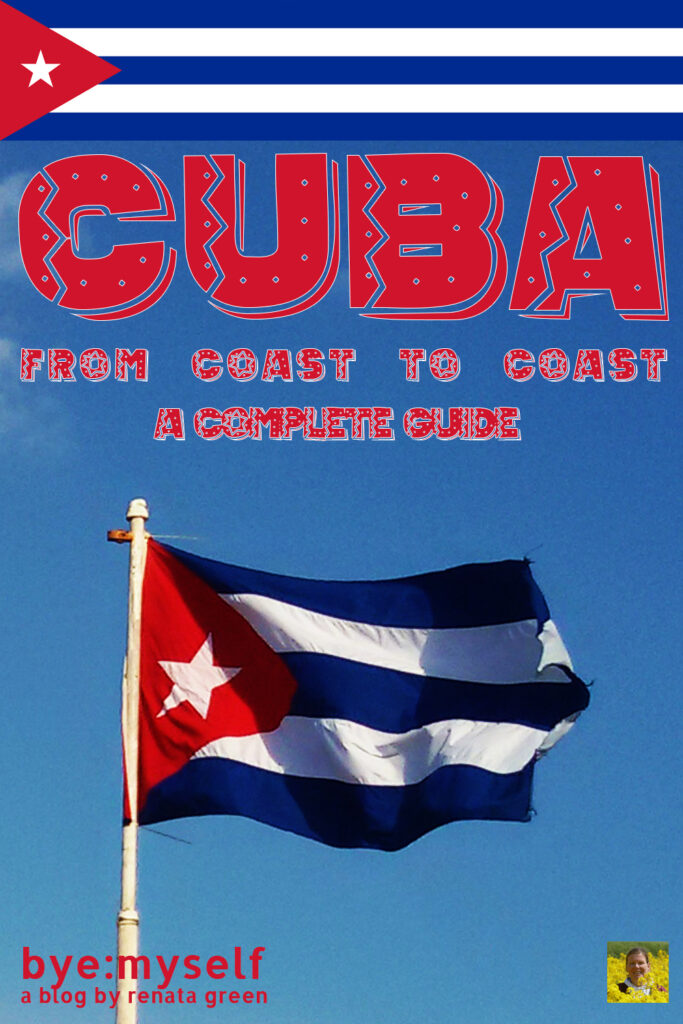

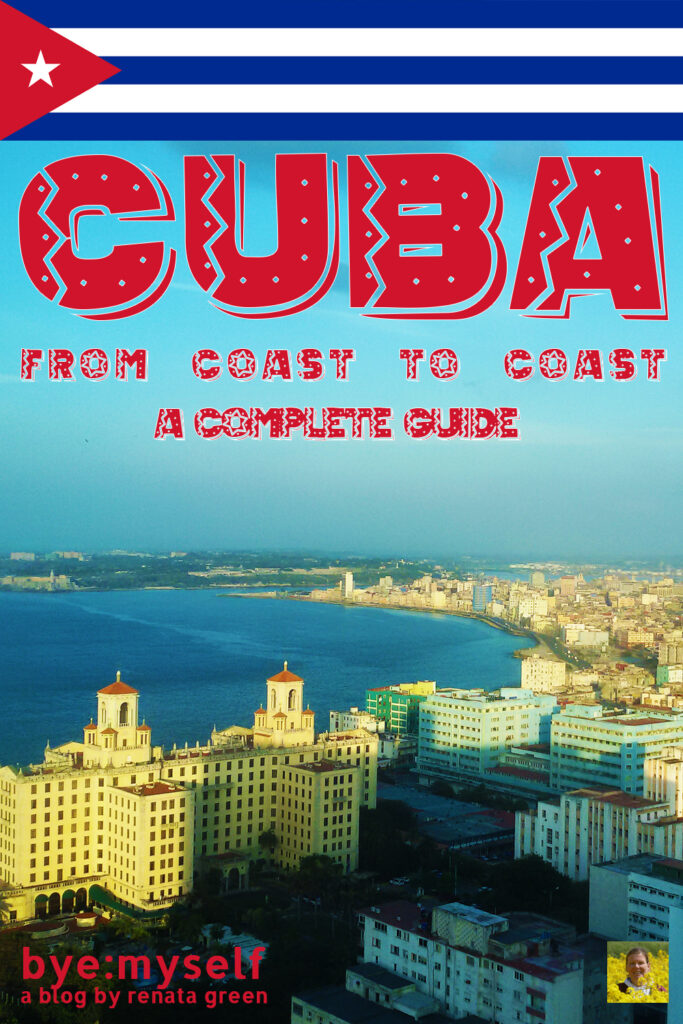
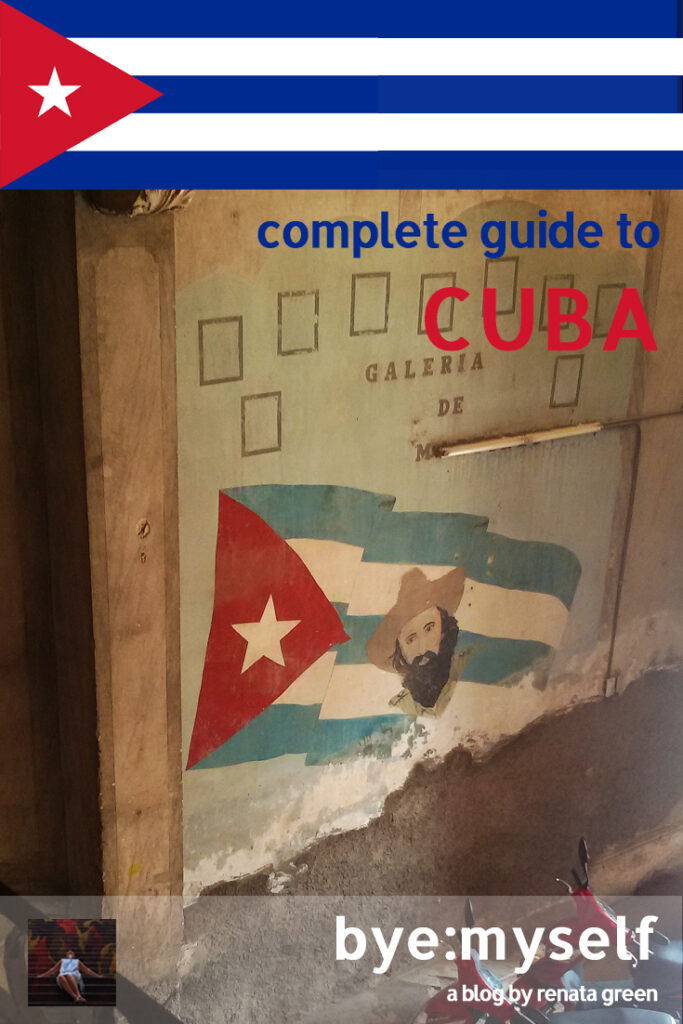
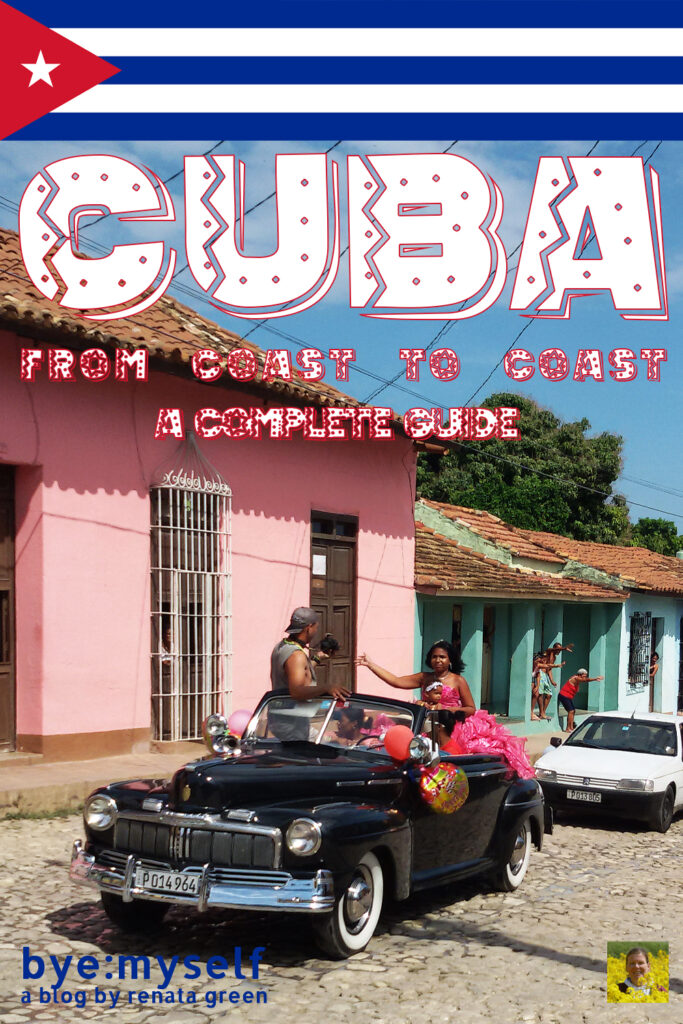
Note: I’m completing, editing, and updating this post regularly – last in November 2022.
Did You Enjoy This Post? Then You Might Like Also These:
Guide to TRINIDAD – Cuba’s Colonial Fantasy
Guide to HAVANA – Welcome to the Club
PERU – Mountains, Coasts, Jungles
Guide to BOGOTÁ – Colombia’s hip ‘n’ artsy capital
Guide to Peru ‘s Five Mountainous Highlights
Street Art in Rio de Janeiro: The Voice of Colors by Rita, Eduardo, and Jorge
Guide to SÃO PAULO – Brazil’s Art Hub
CUBA – the Complete Guide from Coast to Coast
* This is an affiliate link. If you book through this page, not only do you get the best deal. I also get a small commission that helps me run this blog. Thank you so much for supporting me!

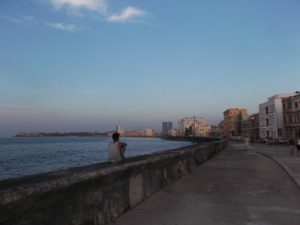



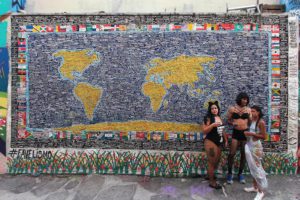
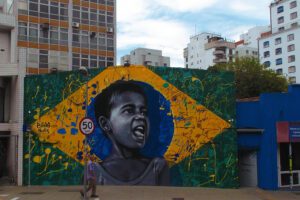
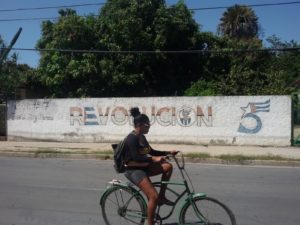
Saved as a favorite, I love your web site!
I absolutely love your blog and find the majority of your posts to be what precisely I’m looking for.
Do you offer guest writers to write content available for you?
I wouldn’t mind composing a post or elaborating on a lot of the subjects you write regarding here.
Thank you, I’m glad you like my blog. In general, I’m writing all my posts myself. This way I can guarantee that the structure as well as the content are precisely how I want it to be 😉
What a information of un-ambiguity and preserveness of valuable experience concerning unpredicted feelings.
Thank you for your valuable comment 🙂
Beautiful place before Castro and family, they still owned this beautiful island all money goes to Castros family not to the people, and all can tourists enjoy in cuba, Cuban people wouldn’t never enjoy, Cuban people is really hungry right now.
Well, before the revolution, all the money went to Battista and his crooked crew. Since the revolution, there has been far more equality. The economic situation is difficult because of the US embargo. It’s not true that Cubans don’t have enough to eat – my daughter used to live in Cuba. It’s very different from capitalist countries, it’s sometimes more difficult, but people also have many advantages in comparison to other Caribbean countries.
This is such a great and comprehensive guide. I am planning a girls trip with old school friends to Cuba and this gives us all the useful information that we need beyond where to eat and what to do.
The information and history of Cuba are interesting. The connectivity, language etc. has been explained briefly about Mexico which makes it more fascinating to visit the country.
Brilliant blog.it is very helpful for me.whenever I go this beautiful city I will remember your guide.
Glad I was able to help 🙂 Enjoy your trip.
It is very interesting to read about the history of Cuba and how it was under the grip of the US for so long. Despite the things having changed now, it is a pity that the locals aren't as hopeful for a bright future as it'd seem. As a tourist, it's helpful to know that staying in a casa particular is better than a hotel due to service standards. I'm surprised that there are two currencies that exist in parallel, of course that'd make tourists confused and locals easy to fool them!
Yes, also the two currencies somehow add to the inequality. But I think they are working on abolishing this two-currency-system.
It is strange to know that how they manage to have two parallel currencies. Undoubtedly it would lead to confusion to travelers. But thanks for your tips.
It's really interesting to know from your post that nothing has significantly changed in Cuba after the end of the US trade ban. Thanks for sharing so precious info
Yes, but the relations are still very limited, as far as I've seen. I think that things are changing – but really, really slowly.
Very informative piece, Renata. How about the budget of travelling in Cuba? What sort of prices we should expect to pay for accommodation, food, transportation? Thanks!
As always, it depends. For a decent room at a casa particular up to 30 CUC/USD plus 5 CUC each for the breakfast. Food at the casas are around 8 to 12 CUC depending on what you're having; in general it's very recommendable to eat at your casa. Entrance fees are usually not expensive. Beware of cab and other drivers, they tend to demand fantasy prices. And at some places that are free, you'll find people who ask for some fees. I told them I wanted to see their permit that they are entitled to take money from me respectively I asked for an official receipt – then all of a sudden I didn't have to pay.
However, it's nice there – you just have to be a bit street smart.
I didn't know there was any country that had two local currencies. Fascinating. I think a trip to Cuba would be really interesting. I've never been there.
Things are very different from other countries. I felt like I travelled back in time when there still was the Eastern block in Europe.
I think Cuba is such an intriguing place to visit just because of the people that made it known. I would love to travel to this place!
I will be traveling to Cuba in a few months, so I definitely needed to read this! Thanks for the tips and beautiful photos!
Good for you! If you need any further info: I'm here!
I hear that Cuba is really beautiful and I'd love to visit! Seems like you had a great trip…such a beautiful place with lots to see and do. Wonderful photos!
I love how you gave information about Cuba's currencies and history. They were very interesting to read! Cuba looks quite scenic and beautiful! What is the best place in Cuba you visited?
Glad you like it! Best place – difficult to say since they were so different. I think my favorites – in no specific order – were Vinales, Cienfuegos, Santa Clara, Santiago, and Baracoa.
I have never been there but many said that Cuba is really a beautiful place to visit and as I can see here in your stunning photos that your really enjoy your trip.
This is a brilliant resource for anyone looking to visit Cuba. You have noted so many great tips and advice here!
Thank you, I'm glad it's being appreciated – and I hope it will help many of you guys to have a great trip to Cuba, too.
I loved my visit to Cuba right after Prez Obama opened it up and it was beautiful!We changed to CUC and it was accepted everywhere. Funny enough, we never got the tourist shake down; in fact, some people (guys lol) offered to help us with things for free. Sure, we bargained for taxis & souvenirs but when converted to dollar, we were literally bargaining over $5 split between 4 of us. Cheap! They needed the money more so we lightly bargained but not as much as we normally do.
Of course, not everybody is the same! I saw a Cuban lady getting really mad at a vendor who asked to much for some cake from tourists. But people there are in a difficult situation – practically everybody – so some try to take advantage; although I don't like it, I understand it. And you are right that the amount is not big, but I do not want to emphasize the impression that because I'm not from Cuba, money is growing from my ears. And I hate being taken for a moron. Not only in Cuba, by the way.
Oh our in-laws have just returned from Cuba and they loved it! I have never considered it before and yet it is definitely somewhere I am curious to visit !
It's very interesting and different from other places – yet sometimes a bit more complicated.
Cuba I have heard is a lovely place.Two of my friends went there. And your review confirms it too.